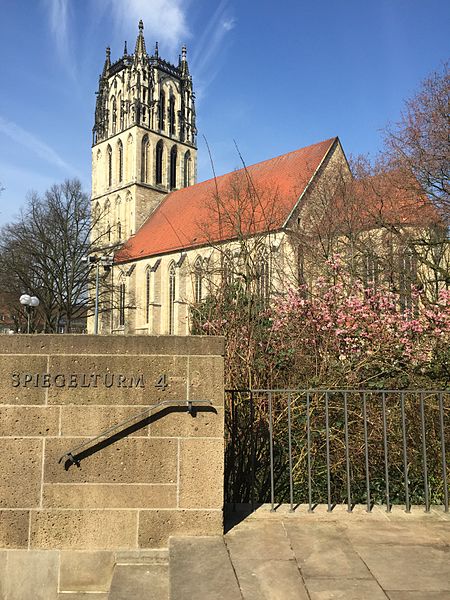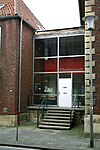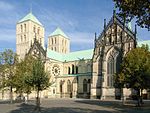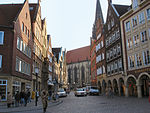Überwasserkirche

Überwasserkirche (German pronunciation: [yːbɐˈvasɐˌkɪʁçə]) is the common name of a Gothic hall church in Münster, North Rhine-Westphalia, Germany. It is a Liebfrauenkirche (Church of Our Dear Lady), dedicated to St. Mary. Officially St. Marien Überwasser, it is also called Liebfrauen-Überwasser. The name literally means "church beyond the water" and describes the location as on the other side of the Aa river, looking from the Münster Cathedral. It was inaugurated as part of an educational Stift in 1040, which later became the University of Münster. On 20 July 1941, Clemens August Graf von Galen delivered a famous sermon against the Nazi regime at the Überwasserkirche. The church was destroyed in World War II. It underwent a restoration that was completed in 1968 and another in 2016. It features two organs built in 1972 and 1985. It now serves as the parish church of a larger merged parish.
Excerpt from the Wikipedia article Überwasserkirche (License: CC BY-SA 3.0, Authors, Images).Überwasserkirche
Überwasserkirchplatz, Münster Altstadt (Münster-Mitte)
Geographical coordinates (GPS) Address Website External links Nearby Places Show on map
Geographical coordinates (GPS)
| Latitude | Longitude |
|---|---|
| N 51.964166666667 ° | E 7.6225 ° |
Address
Überwasserkirche (Liebfrauenkirche)
Überwasserkirchplatz 4
48143 Münster, Altstadt (Münster-Mitte)
North Rhine-Westphalia, Germany
Open on Google Maps









